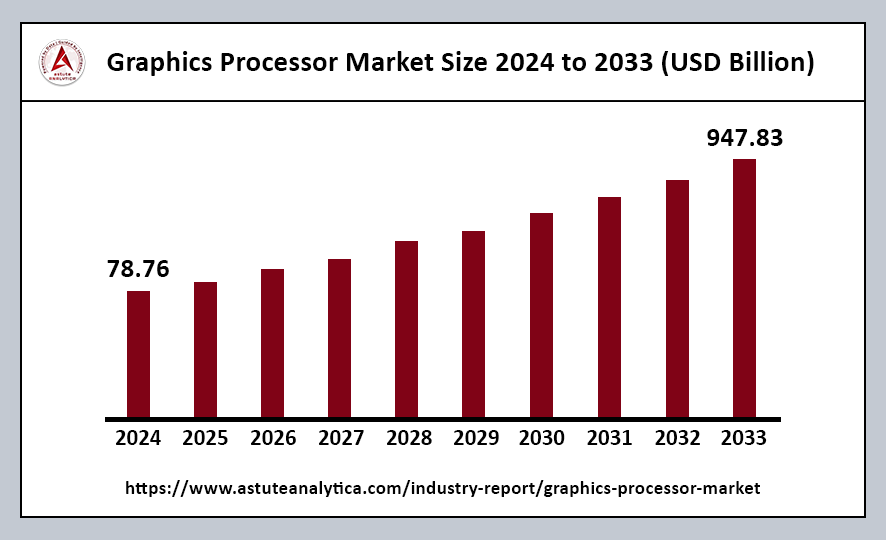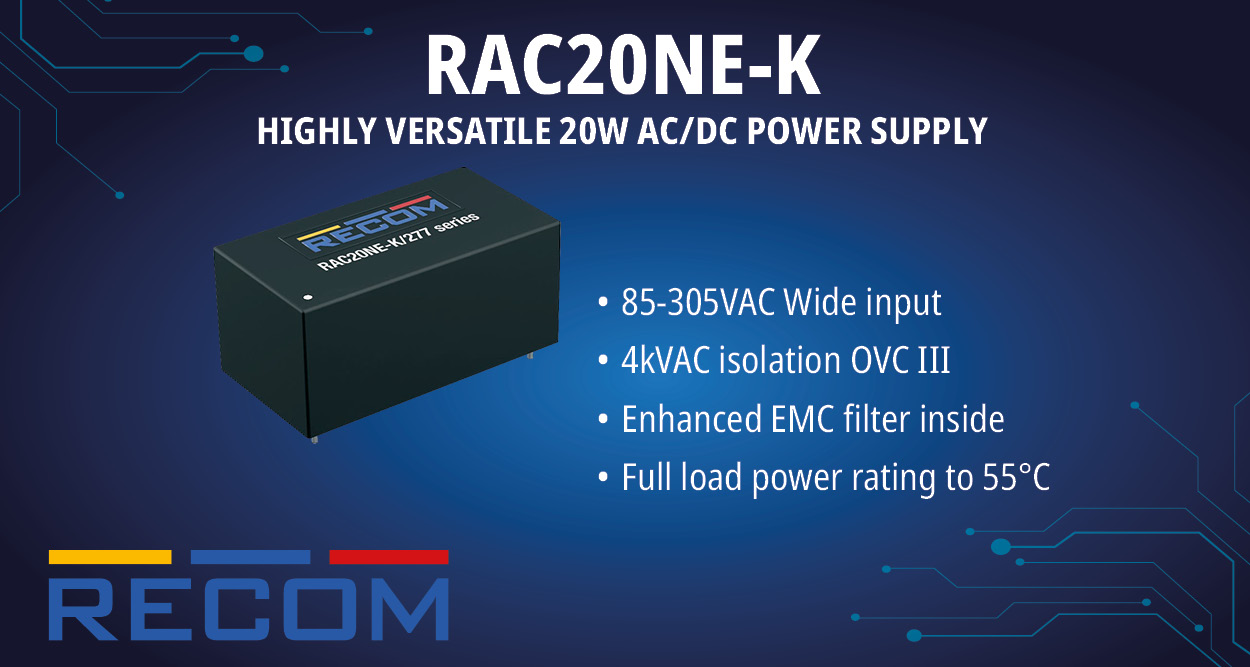The global graphics processor market was valued at US$ 78.76 billion in 2024 and is projected to reach US$ 947.83 billion by 2033, reflecting a Compound Annual Growth Rate (CAGR) of 31.84% during the forecast period from 2025 to 2033.

In recent years, the demand for graphics processors has experienced exponential growth, marked by several significant achievements in shipment numbers and manufacturing benchmarks. In 2024, total GPU shipments surpassed 251 million units, representing an impressive milestone that underscores the rapid adoption of advanced graphics technology globally. This surge reflects the increasing reliance on high-performance graphics solutions across various applications.
The gaming industry remains a crucial driver of this demand, with cloud platforms like Xbox Cloud Gaming and NVIDIA GeForce NOW significantly boosting interest in graphics processors. These platforms facilitate access to high-quality gaming experiences, fueling the need for powerful GPUs. Enthusiasts continue to gravitate toward NVIDIA’s GeForce series, known for its exceptional performance and cutting-edge features. Meanwhile, professionals are increasingly adopting NVIDIA’s Tesla and A100 solutions, which are designed for high-performance computing and AI applications.
Graphics Processor Market Key Takeaways
- In the graphics processor market, hardware-controlled GPUs dominate, holding a commanding share of over 56%. Their superior performance and specialized applications make them a preferred choice for various industries.
- When categorized by type, integrated GPUs have successfully captured more than 45% of the graphics processor market. Their cost-effectiveness and energy efficiency make them ideal for mainstream computing devices.
- In terms of deployment, more than 60% of graphics processors are currently utilized for cloud-based deployment. This trend reflects the growing demand for scalable and flexible computing resources across multiple sectors.
Regional Analysis
Asia Pacific’s Leadership in the GPU Market
In 2024, the Asia Pacific region emerged as a leader in the graphic processor market, demonstrating robust growth driven by several key factors.
- Explosive Growth of the Gaming Market: A primary catalyst for this growth is the explosive expansion of the gaming market in Asia Pacific. The region has become a global hotspot for both game development and consumption, boasting a massive audience that demands visually impressive and immersive gaming experiences. As a result, game developers are increasingly reliant on high-performance GPUs to create cutting-edge titles that captivate players and provide seamless gameplay.
- GPU Demand in Game Development: GPUs are essential tools for game developers, enabling them to implement sophisticated visual effects, complex environments, and realistic character animations. The thriving gaming culture, characterized by competitive gaming, eSports, and mobile gaming, further amplifies this demand, solidifying the significance of GPUs in the industry.
- Emphasis on Emerging Technologies: In addition to the gaming market, the focus on emerging technologies such as artificial intelligence (AI), robotics, and autonomous vehicles in the Asia Pacific region is also contributing to the increased demand for GPUs. These technologies require substantial computational power to process large datasets and execute complex algorithms.
North America’s Promising Growth in the GPU Market
North America is expected to experience notable growth in the graphic processor market, with projections indicating the highest compound annual growth rate (CAGR) in the region. This growth is primarily due to the thriving technology and entertainment industries.
- Thriving Technology and Entertainment Industries: The demand for GPUs in North America is significantly driven by the robust technology and entertainment sectors. Major tech hubs, such as Silicon Valley, serve as epicenters for innovation, where cutting-edge technology is developed and deployed. The synergy between these industries creates a consistent demand for high-performance graphic processors that can meet the evolving requirements of developers and creators.
- Commanding Presence in the Global Market: The United States holds a commanding presence in the global graphics processor market, bolstered by several key factors. The country boasts a wealth of intellectual property that supports the development of innovative GPU technologies. Furthermore, substantial investments in research and development enable companies to stay at the forefront of GPU advancements, ensuring that North American products remain competitive on a global scale.
- Supportive Government Initiatives: Supportive government initiatives also play a crucial role in fostering the growth of the GPU market in North America. Policies promoting technology innovation, enhancing research capabilities, and encouraging partnerships between industry and academia contribute to a favorable environment for GPU development.
Growth of the Graphic Processor Market in Europe
Europe is witnessing significant growth in the graphic processor market, driven by a combination of factors that enhance the demand for powerful GPUs.
- Focus on High-Performance Computing and AI: The region’s increasing emphasis on high-performance computing and artificial intelligence (AI) is a major contributor to the demand for advanced graphic processors. As European industries adopt AI technologies to improve operational efficiency and innovation, the need for GPUs capable of handling complex calculations and large datasets becomes paramount.
- Rise of Gaming and Immersive Technologies: The expansion of the gaming industry, along with the increasing interest in augmented reality (AR) and virtual reality (VR) applications, further fuels the need for advanced GPUs. European gamers and developers are seeking high-quality graphics that enhance their gaming experiences, leading to a surge in demand for discrete graphics cards.
- Investment in Technology and Innovation: European companies are actively investing in technology and innovation, fostering a competitive landscape that attracts talent and resources. This investment enhances the capabilities of local firms and promotes collaboration between businesses, research institutions, and government entities.
Top Trends Escalating the Graphics Processor Market
Growing Demand for AI and Machine Learning: The demand for artificial intelligence (AI) and machine learning is growing exponentially across various industries. Organizations are increasingly leveraging these technologies to enhance efficiency, automate processes, and derive insights from vast amounts of data. As a result, the need for powerful GPUs capable of handling complex computations and data processing is skyrocketing.
Expansion of the Gaming Industry: The expansion of the gaming industry is significantly boosting discrete GPU sales worldwide. With the rise of immersive gaming experiences and the development of more graphically demanding titles, gamers are seeking high-performance graphics cards to enhance their gameplay. This trend is driving manufacturers to innovate and release more advanced GPUs to meet consumer expectations for superior graphics and performance.
Acceleration of GPU Adoption in Cloud Computing: The cloud computing sector is accelerating the adoption of GPUs in data centers globally. As businesses shift towards cloud-based solutions for scalability and flexibility, the demand for GPUs to support various applications—ranging from AI processing to complex simulations—continues to grow. This shift is enabling data centers to provide enhanced computational power and efficiency, further solidifying the role of GPUs in modern computing environments.
Increased Adoption of VR and AR Technologies: There is an increasing adoption of virtual reality (VR) and augmented reality (AR) technologies across multiple sectors, including gaming, healthcare, and education. These technologies require high-performance graphics capabilities to deliver immersive experiences. As industries explore innovative applications of VR and AR, the demand for advanced GPUs that can support these technologies is rising.
Proliferation of High-Resolution Displays: The proliferation of high-resolution displays, including 4K and 8K monitors, is creating a demand for graphic processors with increased capabilities. As consumers and professionals seek displays that provide sharper and more vibrant visuals, graphics processors must evolve to deliver the performance necessary to drive these high-resolution screens effectively. This trend emphasizes the importance of powerful GPUs in achieving optimal visual quality across various applications.
Graphics Processor Market Segmentation
By Component
Hardware-controlled GPUs dominate the graphics processor market thanks to their superior performance capabilities and specialized applications. This dominance is fueled by the growing demand for high-performance computing in sectors such as gaming, artificial intelligence, and professional visualization. The significance of hardware-controlled GPUs in the graphics processor market is further highlighted by their extensive use in data centers.
By Type
Integrated GPUs have secured over 45% of the graphics processor market share, mainly due to their cost-effectiveness, energy efficiency, and suitability for mainstream computing devices. The demand for integrated GPUs is particularly strong in consumer electronics, especially mobile devices and laptops, where power consumption and form factor are critical considerations.
By Deployment
Currently, over 60% of graphics processors are utilized for cloud-based deployment. This dominance is driven by the growing demand for scalable and flexible computing resources across various industries. The trend in the graphics processor market is further fueled by the rapid growth of artificial intelligence and machine learning applications, which necessitate substantial computational power.
Graphic Processor Market Recent Developments
- Nvidia’s Upcoming GPU Roadmap: In March 2025, Nvidia confirmed its upcoming GPU roadmap, announcing that the Blackwell Ultra series is set to launch in the second half of 2025, followed by the Vera Rubin architecture in 2026.
- Launch of Nvidia RTX Pro Blackwell Generation: In March 2025, Nvidia launched the Nvidia RTX Pro Blackwell generation of professional workstation GPUs for desktops and laptops. These new GPUs feature significantly improved AI and ray tracing capabilities and support DLSS 4, the latest version of Nvidia’s real-time neural rendering technology.
- AMD’s Radeon RX 9000 Series Announcement: In February 2025, AMD confirmed that the Radeon RX 9000 series GPUs will launch in March. This decision follows rumors suggesting that Nvidia might discontinue its RTX 5060 Ti and 5060 models around the same time.
- Unveiling of RTX 50-Series Graphics Cards: In January 2025, Nvidia’s CEO, Jensen Huang, unveiled the company’s cutting-edge RTX 50-series graphics cards at the Consumer Electronics Show (CES) in Las Vegas, Nevada.
Top Companies in the Graphics Processor Market:
- Advanced Micro Devices, Inc. (AMD)
- Apple Inc.
- Fujitsu Ltd
- IBM Corporation
- Intel Corporation
- Matrox Electronic Systems Ltd.
- NVIDIA Corporation
- Other Prominent Players
- Qualcomm Incorporated
- Samsung Electronics Co. Ltd
- Sony Corporation
- Taiwan Semiconductor Manufacturing Company Ltd
- VIA Technologies, Inc.
Market Segmentation Overview:
By Component
- Hardware
- Software
- Services
By Type
- Integrated
- Discrete
- Hybrid
By Deployment
- On-premise
- Cloud
By Geography
- North America
- Europe
- Asia-Pacific
- Latin America
- Middle East and Africa
Source: https://www.astuteanalytica.com/industry-report/graphics-processor-market

















